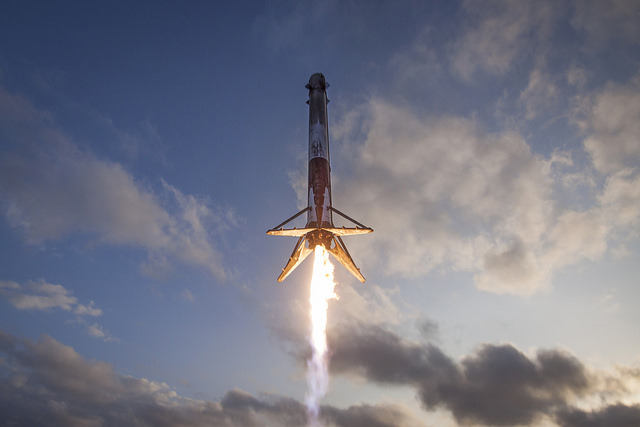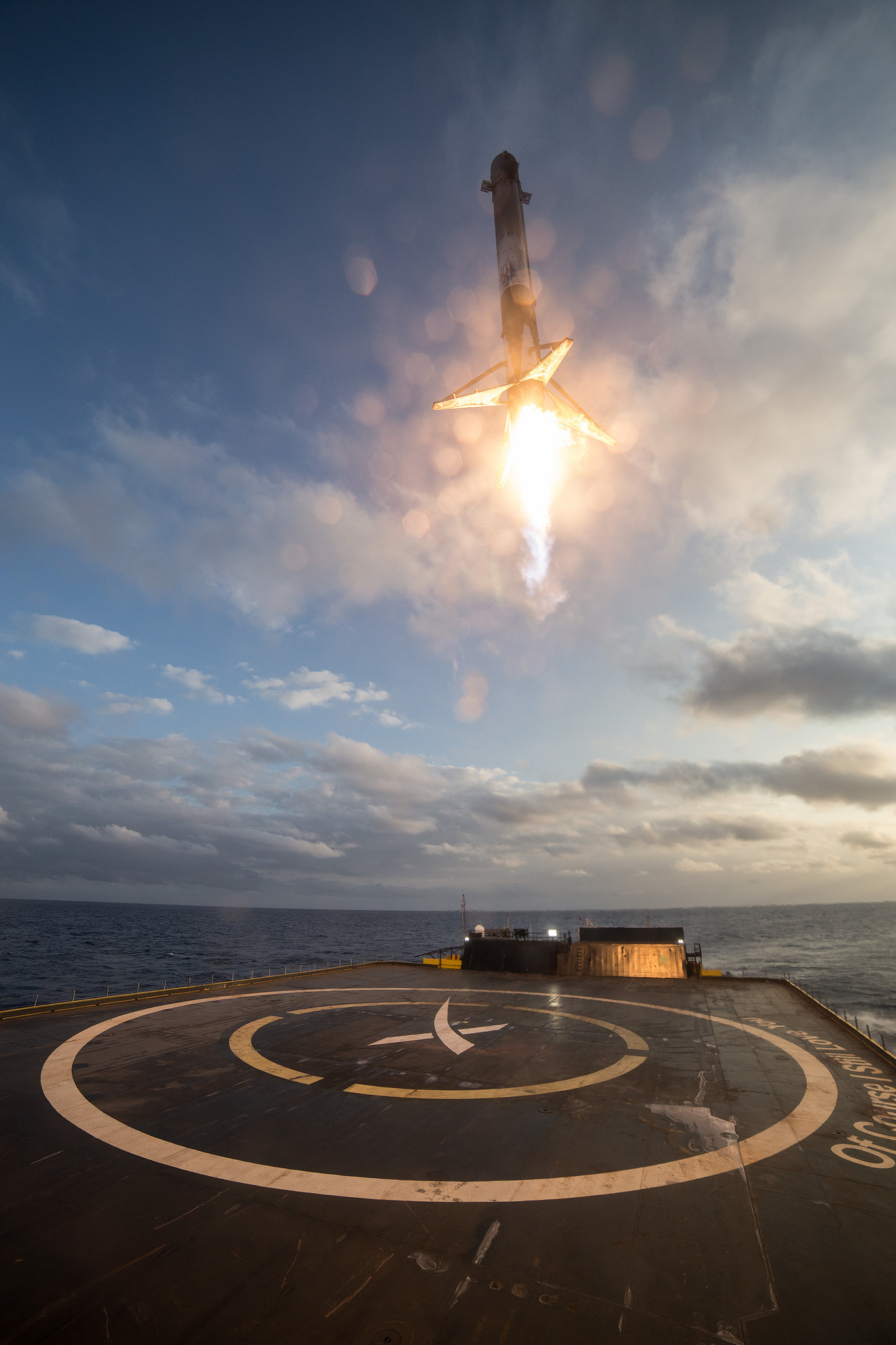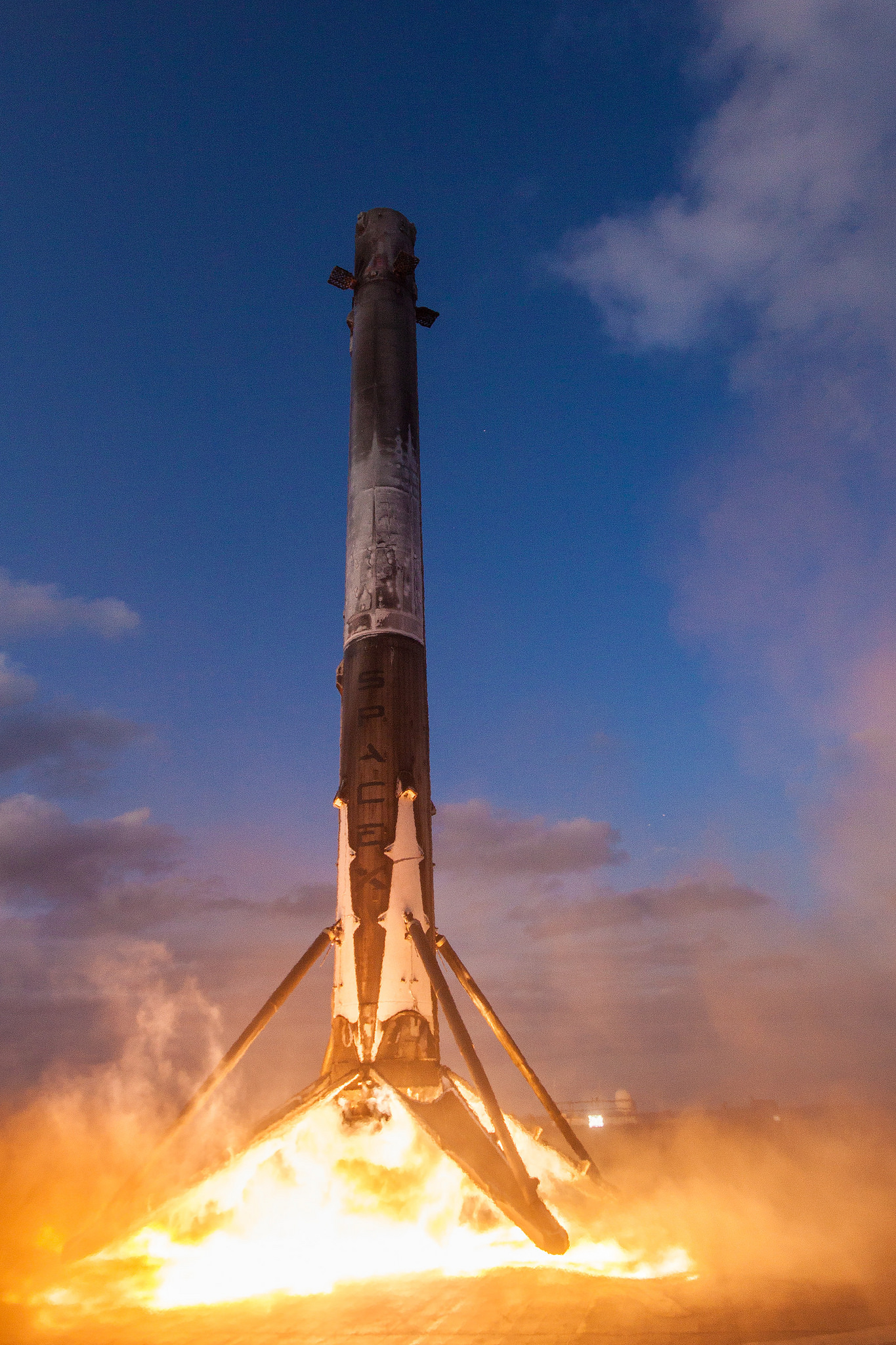Watch a Used SpaceX Rocket Ace Its 2nd Landing (Video, Photos)

A new video gives spectacular up-close looks at last week's historic landing of a used SpaceX rocket on a ship at sea.
The video, captured by several different cameras aboard a SpaceX "drone ship" called Of Course I Still Love You, shows the first stage of a Falcon 9 rocket coming in for a pinpoint landing on March 30. About 9 minutes earlier, the booster had launched on a successful mission to loft the SES-10 communications satellite to orbit.
It was the second launch and landing for this Falcon 9 first stage; the booster also helped send SpaceX's uncrewed Dragon cargo capsule toward the International Space Station on a resupply mission for NASA in April 2016. (The booster's first touchdown also occurred on Of Course I Still Love You.) [In Photos: SpaceX's 1st Reused Falcon 9 Rocket Launch (and Landing)]
SpaceX has prioritized developing fully and rapidly reusable rockets. Such technology could cut the cost of spaceflight dramatically, potentially making the colonization of Mars and other ambitious exploration feats economically feasible, company founder and CEO Elon Musk has said.
Before March 30, SpaceX had successfully landed Falcon 9 first stages eight different times during orbital launches, but it had never re-flown one of the recovered boosters. So the SES-10 mission marked a huge milestone for Musk and the company.
But the second launch just scratches the surface of Falcon 9 boosters' potential, Musk said March 30 during a postlaunch teleconference with reporters.

"The design intent is that the rocket can be re-flown with zero hardware changes — in other words, the only thing that changes is, you reload propellant — 10 times," he said, referring to the Falcon 9 first stage.
Get the Space.com Newsletter
Breaking space news, the latest updates on rocket launches, skywatching events and more!
"And then, with moderate refurbishment that doesn't have a significant effect on the cost, it can be re-flown at least 100 times," Musk added. "Actually, really, we could make 1,000, but it probably isn't quite there. I'm being careful."

During the March 30 flight, SpaceX also recovered the two-stage Falcon 9's payload fairing, the roughly 16.5-foot-wide (5 meters) nose cone that protected the SES-10 satellite during launch. The $6 million fairing floated down for a soft ocean landing thanks to onboard thrusters and a steerable parachute, Musk said.
So SpaceX's Falcon 9 reusability vision extends beyond the first stage. Indeed, Musk said during the postlaunch teleconference that SpaceX may even attempt to recover and reuse the rocket's second stage at some point in the future.
Follow Mike Wall on Twitter @michaeldwall and Google+. Follow us @Spacedotcom, Facebook or Google+. Originally published on Space.com.
Join our Space Forums to keep talking space on the latest missions, night sky and more! And if you have a news tip, correction or comment, let us know at: community@space.com.

Michael Wall is a Senior Space Writer with Space.com and joined the team in 2010. He primarily covers exoplanets, spaceflight and military space, but has been known to dabble in the space art beat. His book about the search for alien life, "Out There," was published on Nov. 13, 2018. Before becoming a science writer, Michael worked as a herpetologist and wildlife biologist. He has a Ph.D. in evolutionary biology from the University of Sydney, Australia, a bachelor's degree from the University of Arizona, and a graduate certificate in science writing from the University of California, Santa Cruz. To find out what his latest project is, you can follow Michael on Twitter.









